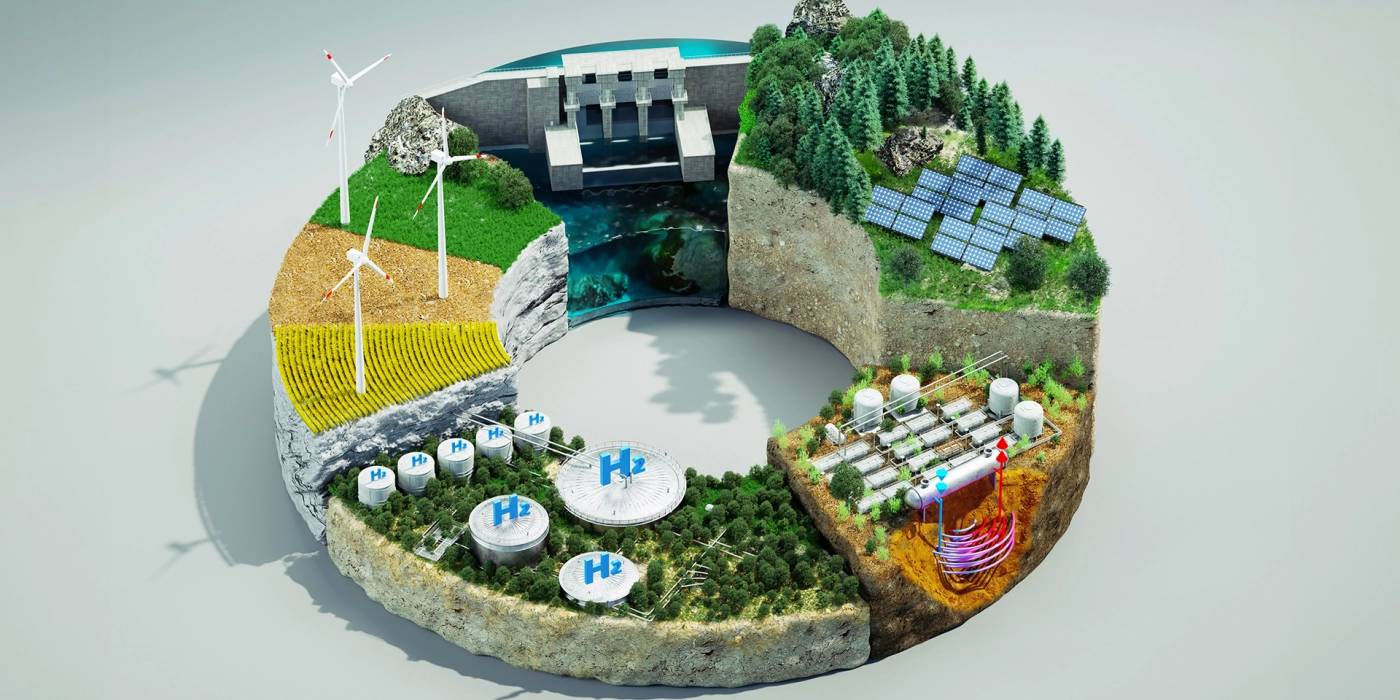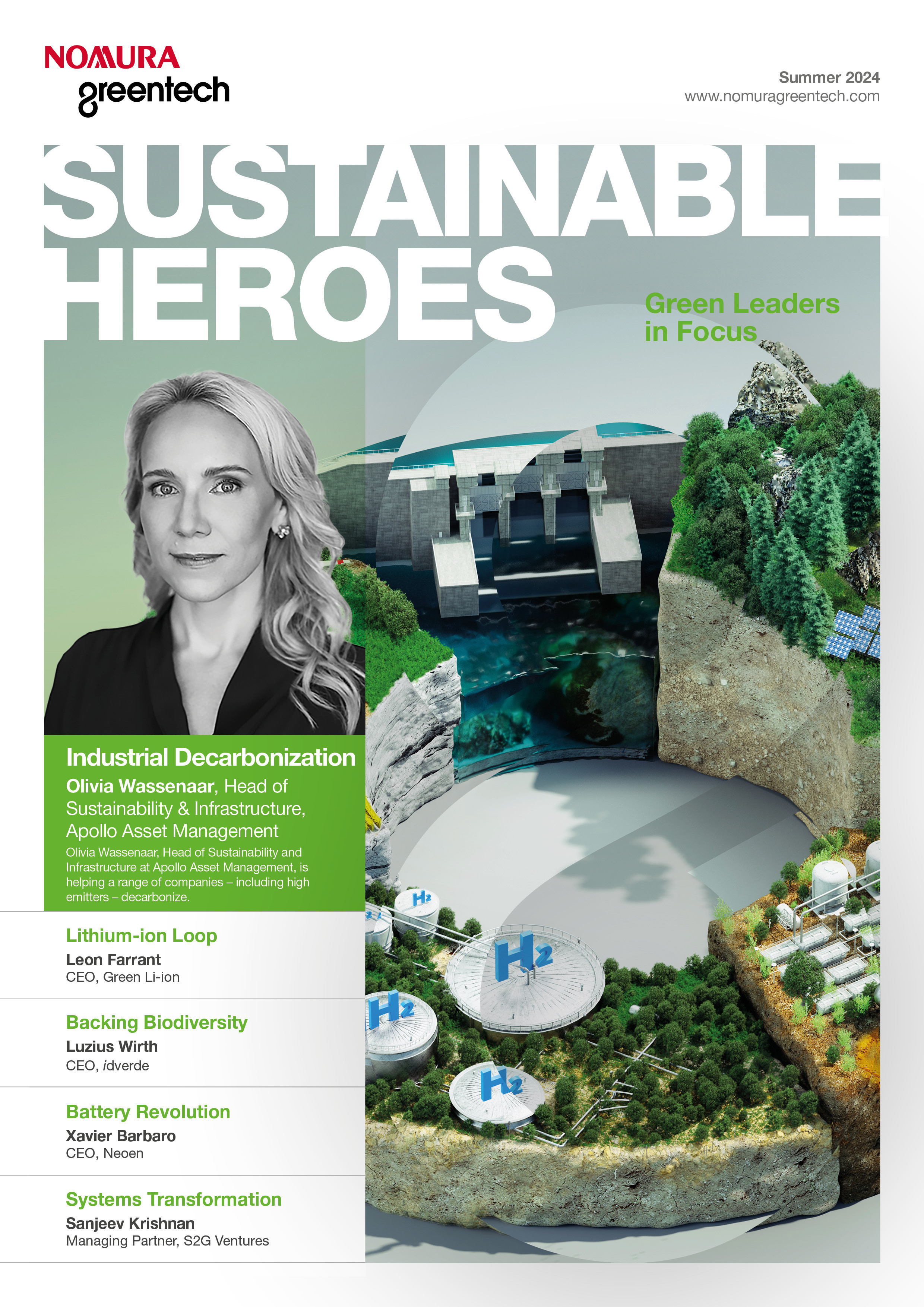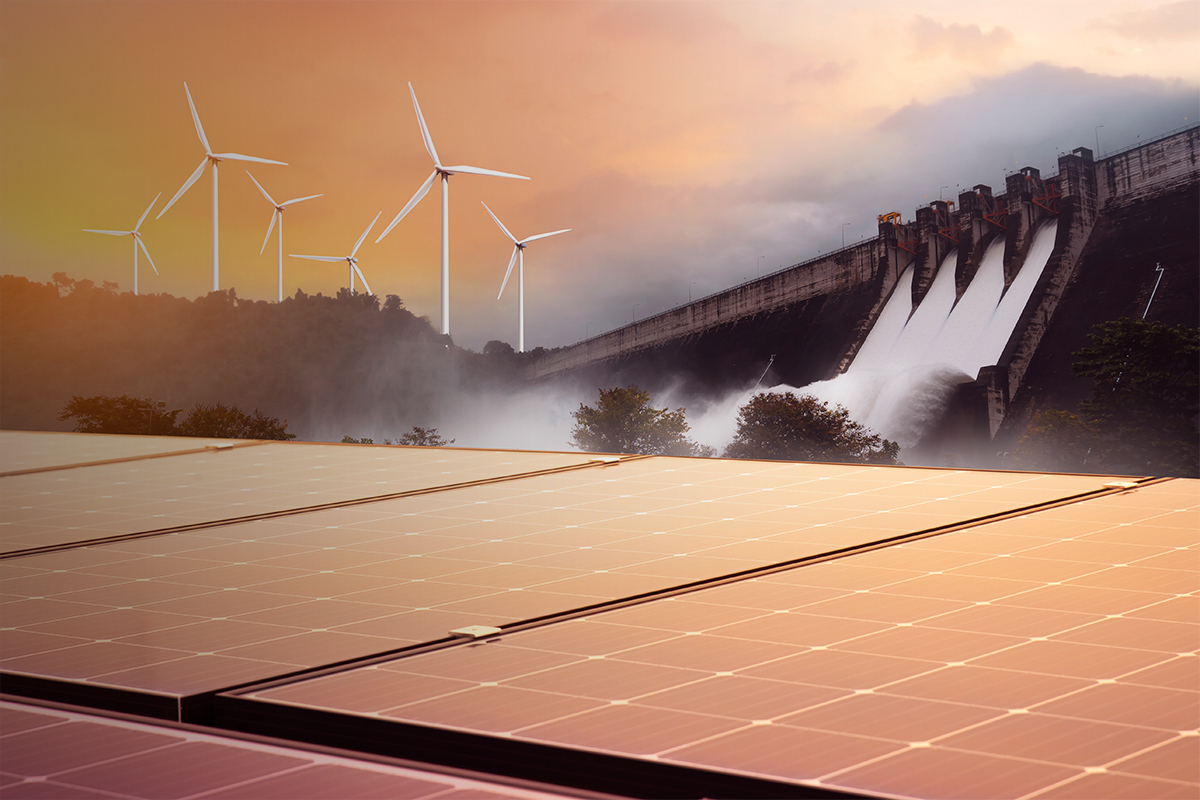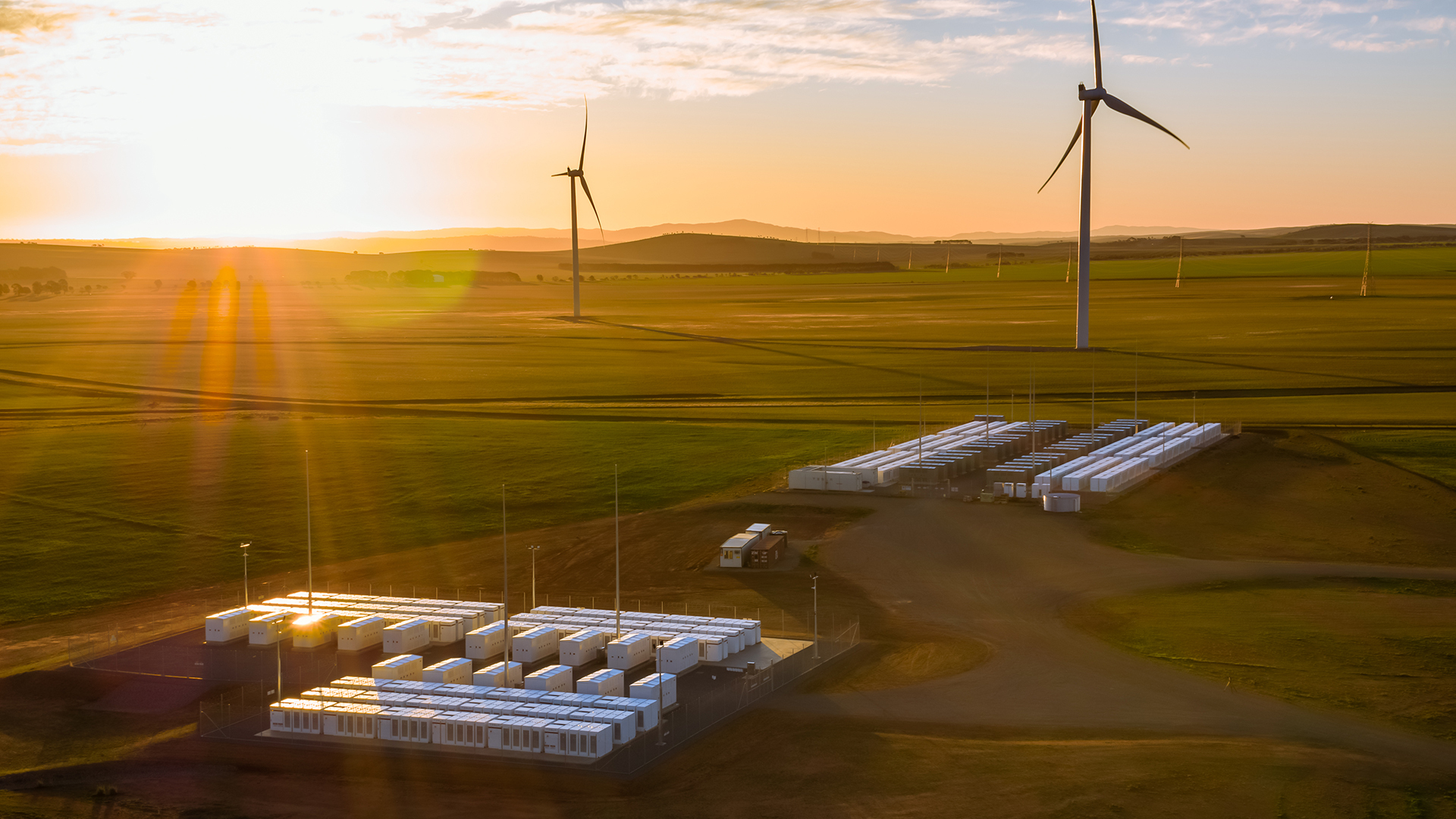-
Apollo Asset Management's Sustainable Investing Platform has five verticals: Energy Transition, Industrial Decarbonization, Sustainable Mobility, Sustainable Resource Use and Sustainable Real Estate
-
Olivia sees more opportunities to put capital to work in good assets with strong companies that are just out of money in a difficult macroeconomic environment
-
A lot of growth equity venture capital has been channeled into climate tech over the last 5 years, but Apollo is largely focused on credit, infrastructure and private equity
Your investment strategy at Apollo is focused on deploying, committing or arranging $50 billion in clean energy capital by 2027 and sees the opportunity to deploy commit or arrange $100 billion by 2030, what are your biggest challenges?
The first challenge that we saw as an organization was figuring out how to get consistency over what counted as climate and transition investing.
Just over two years ago we embarked on an exercise to categorize everything we’ve done as a firm through the lens of investing in the energy transition. Up until this point, while it was a growing area of focus for the firm, we didn’t have any targets focused on the sustainable investing theme. Our team had just been finding good deals – and many of these good deals just happened to be energy transition focused. As we now know, clean transition investments must quintuple by 2050 and the reality is that current investment falls well short of what is required to achieve the transition. Here at Apollo, we view clean transition investing as a theme, versus an asset class. The hallmark of our investing strategy is providing competitive, flexible and patient financing across asset classes.
Fast forward to today and we have dedicated pools of capital as part of our Sustainable Investing Platform, which is focused on seizing on this opportunity to drive the energy transition and decarbonization of industry. Apollo seeks to deploy, commit or arrange $50 billion by end-2027 and we see an opportunity for up to $100bn by 2030. As of the end of 2023, we have deployed about $30bn towards that goal on a trailing five year basis, increasing our annual deployment considerably over the last couple years and are on track to hit our interim target. We view this as a once in a generation opportunity as the economy grows and evolves and we continue to see good risk / return investments for our platform.
The other challenge is accelerating the power of capital to invest in proven technologies that are available at scale today and building the gaps in global supply chains to bolster overall infrastructure resilience. While government and other funding sources can help, the private sector will need to carry the bulk of the load.
What are the most important factors you consider when making green investments?
To start, we are seeing massive tailwinds to make money for our investors via the energy transition but not every opportunity presents an attractive return profile.
Secondly, the potential investment must meet our screening framework for climate and transition investment. We have had deals come up where everyone agrees that they are green, yet they don’t fall into any of the categories in our multi-page, proprietary framework. In a few situations we’ve had to re-examine our criteria or make updates. Most recently that was the case around adaptation deals. Every potential investment is reviewed by our Climate Task Force that seeks to create standardization while also responding to the sector as it evolves.
Thirdly, we want to ensure that we can add tangible value, for example by formulating a green value creation plan around a specific asset.
What’s your approach to deals that are not completely green?
We do have a framework for evaluating ‘gray to green’ and/or industrial decarbonization deals. If the Climate Task Force determines the opportunity is aligned with our framework, then it is designated as a ‘projected to contribute’ transaction, meaning that we believe the opportunity will contribute to the energy transition during Apollo Funds’ ownership period.
What differentiates Apollo’s sustainable investing strategy? Where are you seeing the greatest opportunities?
If we think about this unprecedented opportunity, which will require around $5 trillion in annual investment, about 70% will need to come from private capital. Of that 70% we see about 35-40% coming from debt, so we are really leaning into opportunities along the credit part of the value chain. A lot of growth equity venture capital has been channeled into climate tech over the last 5 years to the tune of about $170 billion, but we are largely focused on credit, infrastructure and private equity.
In terms of geographies, we’ve generally been focused on North America and Western Europe with a broader OECD focus as that not only reflects our expertise but also reflects where we have boots on the ground, understand the markets, have good deal experience and can perform the due diligence to execute, measure and monitor our Funds’ investments.
Which areas are you looking at for future investments and which recent investments had the biggest impacts?
Our Sustainable Investing Platform has five verticals, or areas of focus: Energy Transition, Industrial Decarbonization, Sustainable Mobility, Sustainable Resource Use and Sustainable Real Estate, plus subcategories within each of those. Within Energy Transition, for example, we see deployment of renewables continuing to accelerate as the US expands its cumulative renewable capacity, but energy storage installation must continue to grow meaningfully.
In terms of recent deals, I’d highlight the $300 million project financing we extended to Sun Power in the US. It is a great example of our holistic approach to energy investing and was a cross-platform effort leveraging our infrastructure and tax teams to strengthen Sun Power’s ability to deliver solar and storage solutions to customers across the country.
We also did an interesting deal on the credit side with Air France KLM. As part of the broader financing, we structured a tranche that commits the airline to buying €100 million in sustainable aviation fuel over the next four years. This was a good example of taking a regular financing and looking for a sustainability focused component.
How has the higher interest rates backdrop impacted sustainability investing?
First and foremost, we are seeing more opportunities to put capital to work in good assets with strong companies that are just out of money in a difficult macroeconomic environment. Examples include wind and solar developers in the US, whose business plan was predicated on low rates in perpetuity. The funding market has changed but the business case is still valid.
We’ve also seen interesting opportunities to put in place structured deals to help companies with the capital they need to continue to grow at a return profile that works for Apollo.
How much of a tailwind is the Inflation Reduction Act (IRA) for your strategy?
It is worth noting that across our portfolio, we don’t invest in climate tech or venture capital. With that said, the IRA and other recent legislation offer significant funding and is some of the most comprehensive climate legislation passed thus far.
We are seeing tailwinds from the IRA in terms of general market enthusiasm -- particularly in the renewable power sector. We’ve seen significant growth recently after waiting for clarifications around how the IRA would play out – recent statistics cite $200bn+ in new manufacturing facility announcements in the US post-IRA. Many service providers that are connected to different parts of the renewables value chain are certainly seeing activity pick up so that’s been very beneficial to some portfolio companies.
What are the future green technologies you are most excited about?
We are spending a lot of time on industrial decarbonisation and “gray-to-green” opportunities.
So much focus over the last few years has been on power and automotive, and I think the next wave of investing will also include things like greening of buildings and industrial processes.
We have been looking at a variety of different businesses, helping companies change some parts of their infrastructure. For example, as industrial businesses are focused on transitioning to a different type of fleet, we have to think about the infrastructure supporting that. Can we help companies finance their EV charging build out? Are there other energy or fuel sources we can think about? This is also relevant to our conversations around power sources, which are different today than they were 50 years ago. I’m a big believer in batteries. I think wind and solar have been fantastic, but one of the things that we see is the effects of intermittent power. I think the real solution for that is going to be around the battery landscape.
Contributor

Olivia Wassenaar
Head of Sustainability & Infrastructure, Apollo Asset Management
Disclaimer
This content has been prepared by Nomura solely for information purposes, and is not an offer to buy or sell or provide (as the case may be) or a solicitation of an offer to buy or sell or enter into any agreement with respect to any security, product, service (including but not limited to investment advisory services) or investment. The opinions expressed in the content do not constitute investment advice and independent advice should be sought where appropriate.The content contains general information only and does not take into account the individual objectives, financial situation or needs of a person. All information, opinions and estimates expressed in the content are current as of the date of publication, are subject to change without notice, and may become outdated over time. To the extent that any materials or investment services on or referred to in the content are construed to be regulated activities under the local laws of any jurisdiction and are made available to persons resident in such jurisdiction, they shall only be made available through appropriately licenced Nomura entities in that jurisdiction or otherwise through Nomura entities that are exempt from applicable licensing and regulatory requirements in that jurisdiction. For more information please go to https://www.nomuraholdings.com/policy/terms.html.






